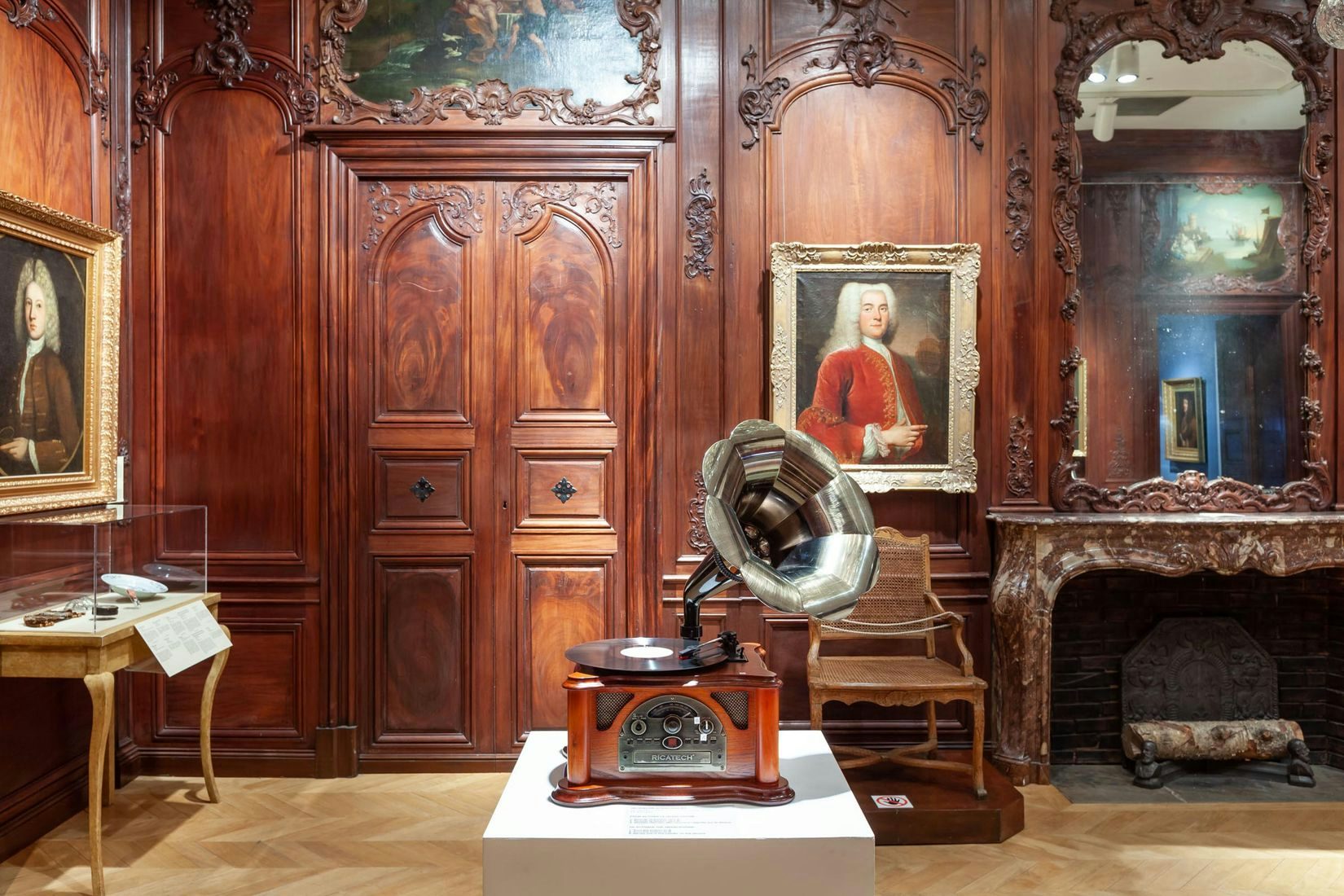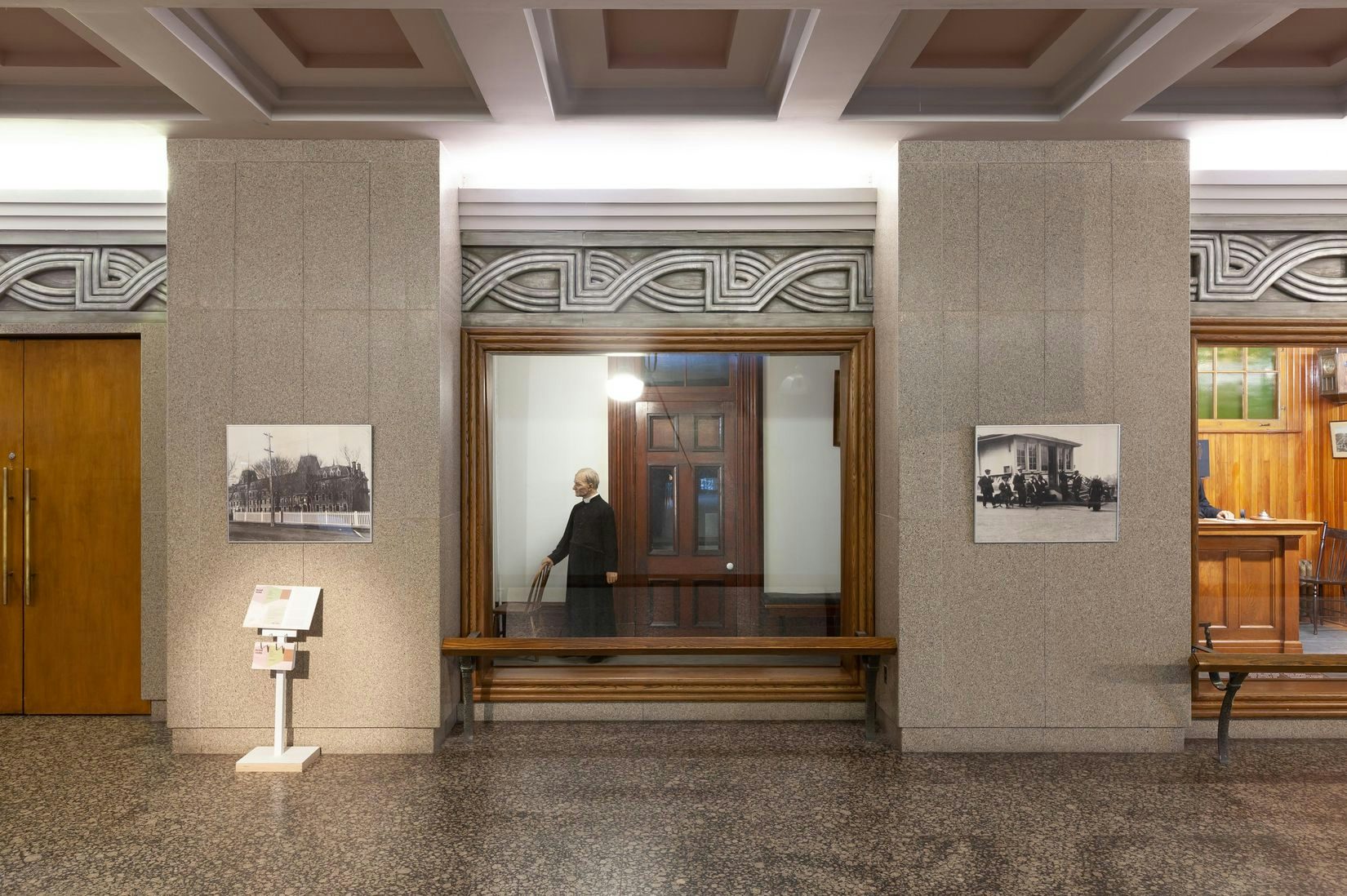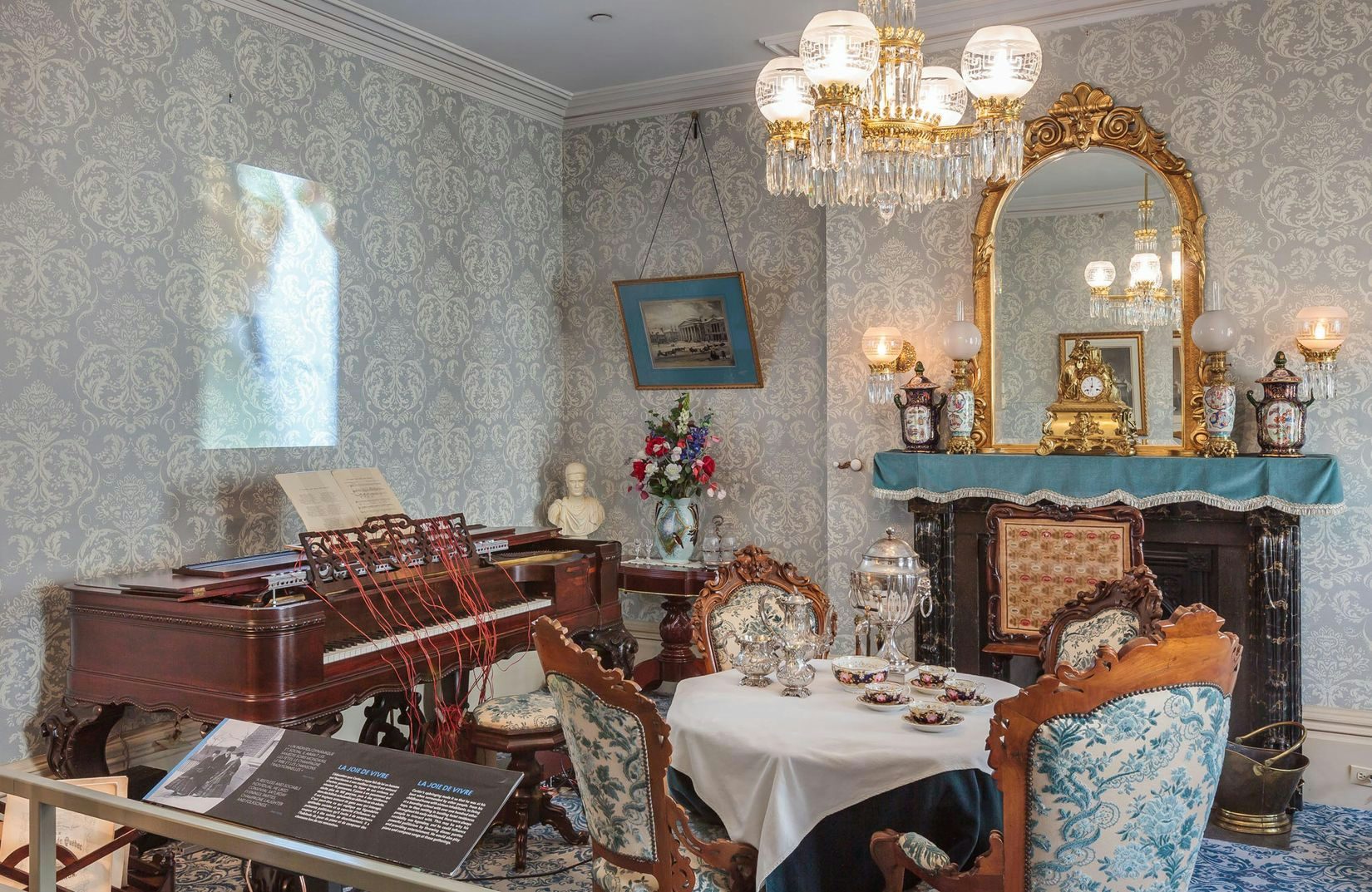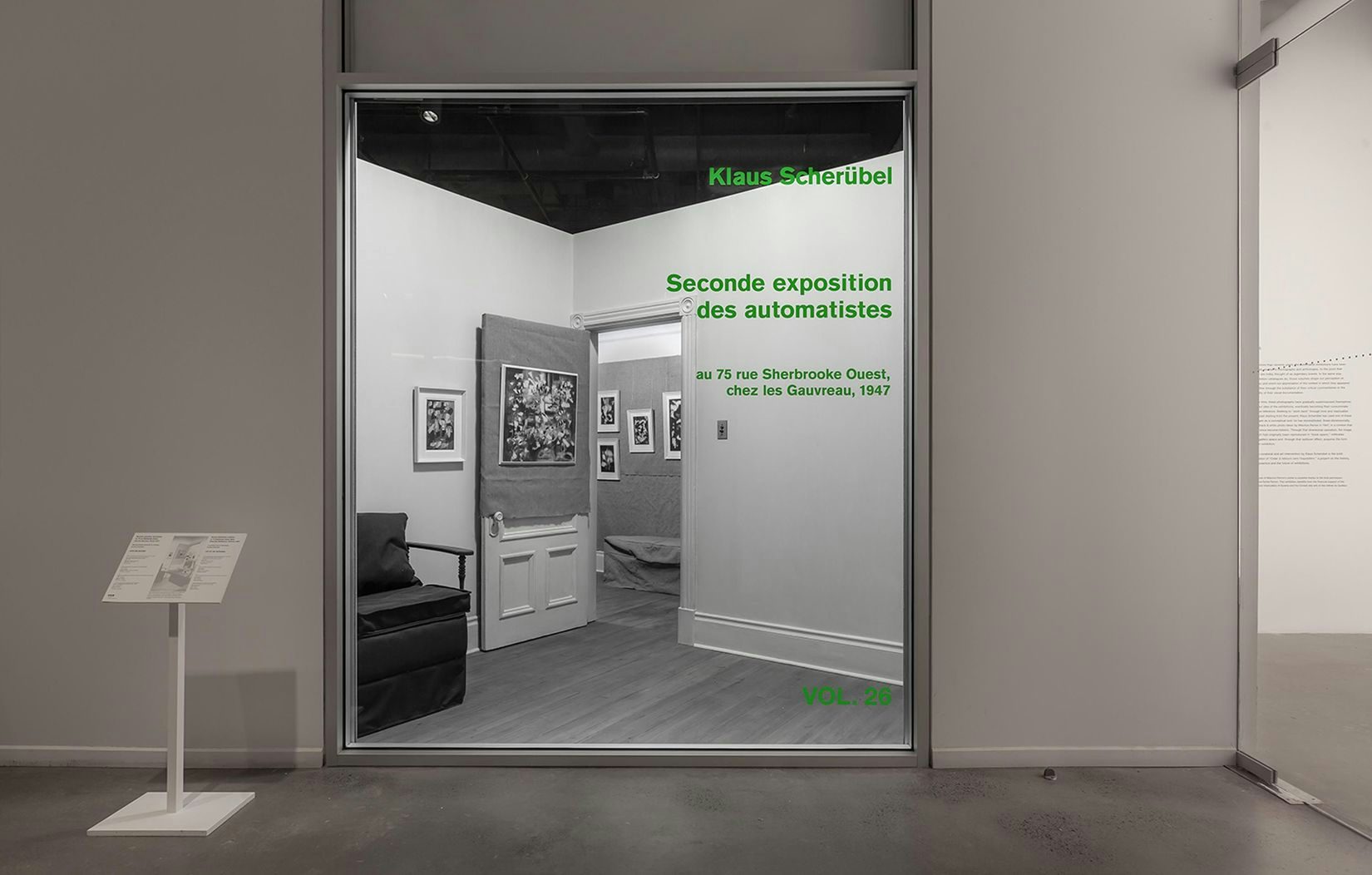
Period rooms
Pierre Dorion, Frédérick Gravel, Claire Savoie
Château Dufresne, Musée et lieu historique patrimonial
2019.06.14 - 08.18
The period room offers a fascinating experience of space and time: it locates visitors in an interior reconstituting a past that seems remote, and frozen for eternity. This dizzying anachronistic effect is accentuated when such rooms are reconfigured from the point of view of the present day, through artists’ interventions. The latter can elicit new narratives, whether historical or fictional, or foster associations with a time that is long gone. In so doing, each intervention creates a temporary opening into the past represented by the period room in question, encouraging visitors to engage in new and unfamiliar experiences there.
Curated by Marie J. Jean, this event presents experimentations by seven contemporary artists—Steve Bates, Thomas Bégin, Pierre Dorion, Frédérick Gravel, Jacqueline Hoàng Nguyễn, Jocelyn Robert, and Claire Savoie—in the period interiors of the Château Dufresne, the Château Ramezay, Saint Joseph’s Oratory of Mount Royal, the Sir George-Étienne Cartier residence, and the Guido Molinari Foundation. Concurrently, at VOX, centre de l’image contemporaine, Klaus Scherübel has produced an art intervention that employs the period room format to reconstitute two exhibitions organized in 1947 by the Automatist artists.
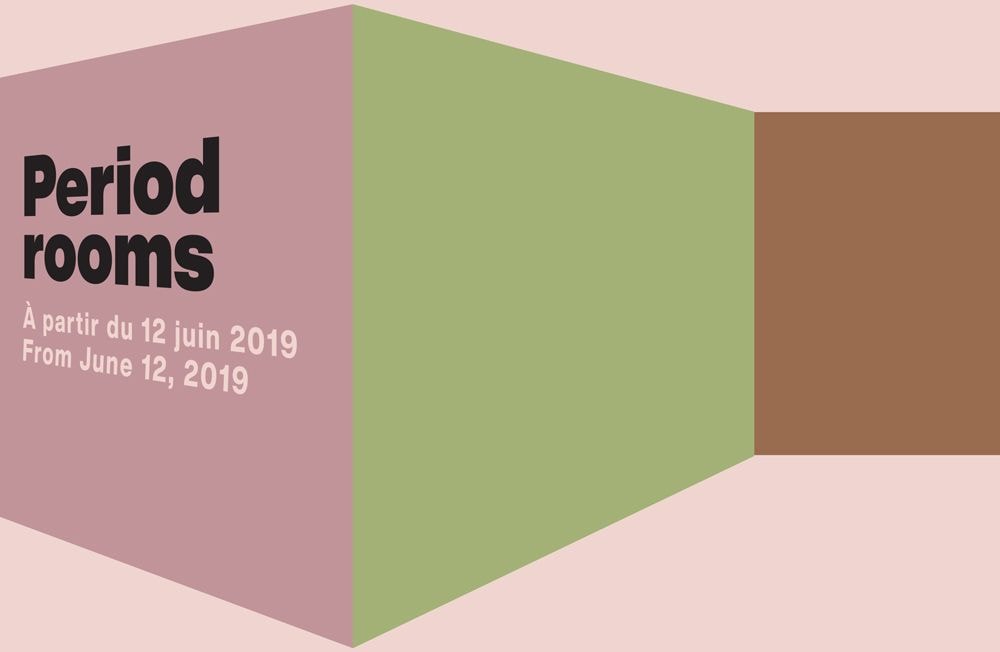
Pierre Dorion has executed a new series of watercolours based on photographic documentation of the period rooms from historical museums in Montreal. The series is being shown at the Château Dufresne, in an unusual space: a former exhibition room of the Musée d’art contemporain, which occupied the premises from 1965 to 1968. Bordering the white exhibition panels installed in the 1960s, the Château’s distinctive woodwork can still be seen. The watercolours as well as the room refer to the stratified nature of the premises’ history, which, via the period room, convenes countless individual stories as well as the collective imagination.
Claire Savoie has created a sound piece in the historic rooms of the Château Dufresne. The exhibition design for this venue’s guided tour structures the experience of visitors who wish to familiarize themselves with the site, its history, and the personal (hi)stories that have shaped it. To complement that approach, the artist has designed a soundtrack meant to “activate” the memory of the space and recount a wordless narrative to accompany the tour. The piece uses sounds that evoke everyday activities, interspersed with noises and music, generating anachronistic disruptions and different registers here and there. The noises sometimes seem to come from far away, and at other times from close by, occasionally even seeming to emerge from somewhere outside the space. There is a hint of dramatic tension animating the overall mood, creating unexpected atmospheric effects. To close out the journey through the period rooms, a video installation reconfigures the sound experience in another narrative register.
Choreographer and dancer, Frédérick Gravel defies disciplinary conventions. With this intervention in the rooms of the Château Dufresne, he explores the theatrics of classical music, providing us with the opportunity to listen to a striking concert. Visitors are invited to sit in one of the Château’s spacious, empty rooms and hear an ensemble of musicians give a private performance, as often occurred in the 1920s, when the Dufresne brothers still lived here. Little by little, the condition of some guests appears to be altered, and conventions are quietly subverted. What emerges is a performance evoking the dreams and failures of personages who might have lived in the space.
Performances on July 4, 5, 11 and 12, 2019 at 7 pm.
Dancers:
David Albert-Toth
Kimberley De Jong
Frédérick Gravel
Brianna Lombardo
Musicians:
Ana Drobac (violin)
Pemi Paull (viola)
This is one of the 200 exceptional projects funded through the Canada Council for the Arts’ New Chapter program. With this $35M investment, the Council supports the creation and sharing of the arts in communities across Canada. This event was also made possible with financial support under the Agreement on the Cultural Development of Montréal between the City of Montréal and Québec government.

